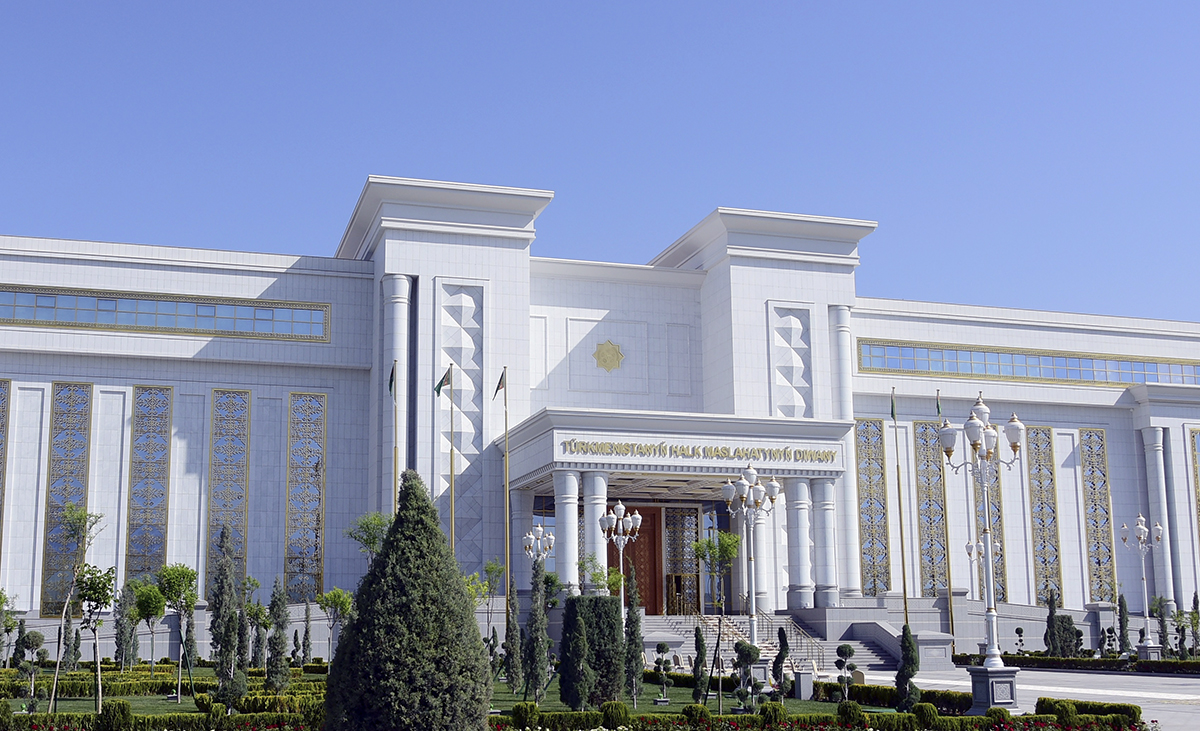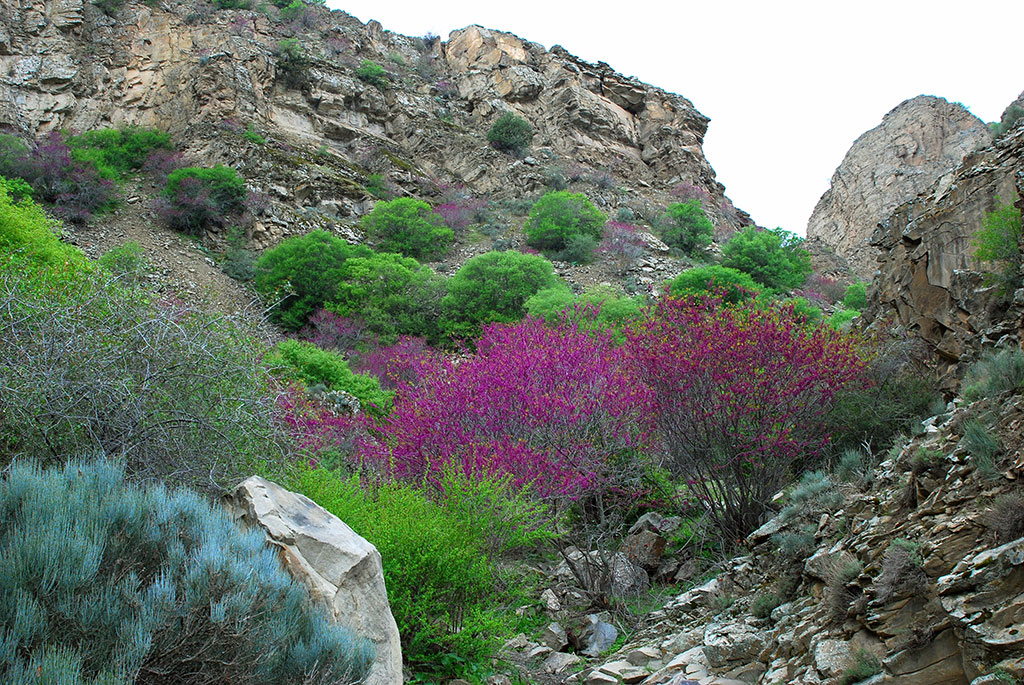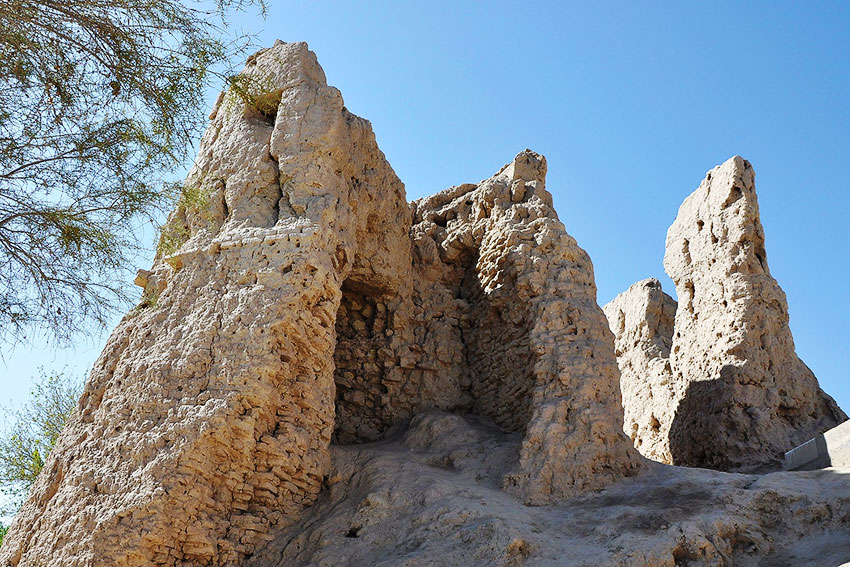One of cultural architectural monuments of the Middle Ages - Ysmamyt-ata, which experienced its “second birth” in the current spring, is situated in several kilometers from Gorogly etrap of Dashoguz province.
This monument is one of the sacred places, where the residents of not only Turkmenistan and neighboring states, but also countries of far abroad come here to make a pilgrimage.

It was composed the legends about origin of the name of Ysmamyt-ata monument, which tell that it was originated from junction of two names Ism Sahab and Soltan Mahmud. What do we know about them? According to the written sources, the complex Ysmamyt-ata is located on the territory of ancient Eshretgala ancient settlement, which was erected in X-XI centuries. Eshretgala was governed by Soltan Mahmud, who had great authority among people. It is also known that for advocacy of Islamic religion in Turkmenistan, son of comrade and friend of Muhammed Musaib kadi Ism Sahab arrives in Khoresm. He met with Soltan Mahmud, who didn’t object to the intention of Ism Sahab to advocate Islam. Soon, Soltan Mahmud with his nationals adopted Islam. After death of Ism Sahab, Soltan Mahmud took care of immortalization of his name in memory of people.
According to the legend, Soltan Mahmud came to Ism Sahab and asked to join their names, explaining it with reason that he had no son and successor of clan, and his name can be disappeared. Ism Sahab agreed and since that time, they called him Ism-Mahmud – Ismahmut – Ysmamyt.

The largest grave on the graveyard is the grave of Ysmamyt-ata (Ism Sahab). Soltan Mahmud was also buried on the same graveyard, but his grave hasn’t been preserved.
Separate structures of the complex of Ysmamyt-ata belong to various times that is confirmed by different levels of foundation.
“Dashkocha” – “stony street” – seven-domed 40-meter long corridor, leading to the mausoleum, is the most ancient among preserved parts of the complex. “Gurhana” – the room for reading of Koran is situated in the southern part of mausoleum. Corridor, winter and summer mosques as well as madrasah or tekke were attached to “dashkocha”.
After careful study, holding of detailed photofixation of all structures of the monument, the specialists came to conclusion that restoration and conservation work should be realized in several stages.
For professional implementation of those restoration and conservation works, it was invited the specialists from the reserve for protection of monuments of history and culture of Koneurgench as well as architects from Uzbekistan V.I. Artyemyev and A.M. Urmanova, who have worked in our country – on unique monuments of architecture of Koneurgench of Dashoguz province. They have taken the sizes and composed the project of the monument with use of laser rangefinder.

Architects produced preliminary and working drawings of the initial look of the monument. On whole perimeter of walls, inter-domed spaces, it was implemented the works on disassembling of dangerous and ramshackle sections. According to inner interior of “dashkocha”, it was realized the works on removal of plaster of walls, domes, corner squinches, arches with their further restoration.
In a word, prior to emergence of the monument in its practical initial look, it was carried out scale and laborious task.
A large restoration project was realized by the specialists of the Institute of History of the Academy of Sciences of Turkmenistan – the winner of contest of the International Program of “Ambassador’s Fund” of the State Department of USA entitled “Preservation of cultural heritage”. Residents of etrap, who helped with their active participation in the restoration works, also made a huge contribution to the revival of unique historical facility – Ysmamyt-ata monument.
… Centuries later, historical complex Ysmamyt-ata gained its “second life”, having become another impressive example of preservation of rich and original historic-cultural heritage of the Turkmen people.
This monument is one of the sacred places, where the residents of not only Turkmenistan and neighboring states, but also countries of far abroad come here to make a pilgrimage.

It was composed the legends about origin of the name of Ysmamyt-ata monument, which tell that it was originated from junction of two names Ism Sahab and Soltan Mahmud. What do we know about them? According to the written sources, the complex Ysmamyt-ata is located on the territory of ancient Eshretgala ancient settlement, which was erected in X-XI centuries. Eshretgala was governed by Soltan Mahmud, who had great authority among people. It is also known that for advocacy of Islamic religion in Turkmenistan, son of comrade and friend of Muhammed Musaib kadi Ism Sahab arrives in Khoresm. He met with Soltan Mahmud, who didn’t object to the intention of Ism Sahab to advocate Islam. Soon, Soltan Mahmud with his nationals adopted Islam. After death of Ism Sahab, Soltan Mahmud took care of immortalization of his name in memory of people.
According to the legend, Soltan Mahmud came to Ism Sahab and asked to join their names, explaining it with reason that he had no son and successor of clan, and his name can be disappeared. Ism Sahab agreed and since that time, they called him Ism-Mahmud – Ismahmut – Ysmamyt.

The largest grave on the graveyard is the grave of Ysmamyt-ata (Ism Sahab). Soltan Mahmud was also buried on the same graveyard, but his grave hasn’t been preserved.
Separate structures of the complex of Ysmamyt-ata belong to various times that is confirmed by different levels of foundation.
“Dashkocha” – “stony street” – seven-domed 40-meter long corridor, leading to the mausoleum, is the most ancient among preserved parts of the complex. “Gurhana” – the room for reading of Koran is situated in the southern part of mausoleum. Corridor, winter and summer mosques as well as madrasah or tekke were attached to “dashkocha”.
After careful study, holding of detailed photofixation of all structures of the monument, the specialists came to conclusion that restoration and conservation work should be realized in several stages.
For professional implementation of those restoration and conservation works, it was invited the specialists from the reserve for protection of monuments of history and culture of Koneurgench as well as architects from Uzbekistan V.I. Artyemyev and A.M. Urmanova, who have worked in our country – on unique monuments of architecture of Koneurgench of Dashoguz province. They have taken the sizes and composed the project of the monument with use of laser rangefinder.

Architects produced preliminary and working drawings of the initial look of the monument. On whole perimeter of walls, inter-domed spaces, it was implemented the works on disassembling of dangerous and ramshackle sections. According to inner interior of “dashkocha”, it was realized the works on removal of plaster of walls, domes, corner squinches, arches with their further restoration.
In a word, prior to emergence of the monument in its practical initial look, it was carried out scale and laborious task.
A large restoration project was realized by the specialists of the Institute of History of the Academy of Sciences of Turkmenistan – the winner of contest of the International Program of “Ambassador’s Fund” of the State Department of USA entitled “Preservation of cultural heritage”. Residents of etrap, who helped with their active participation in the restoration works, also made a huge contribution to the revival of unique historical facility – Ysmamyt-ata monument.
… Centuries later, historical complex Ysmamyt-ata gained its “second life”, having become another impressive example of preservation of rich and original historic-cultural heritage of the Turkmen people.






